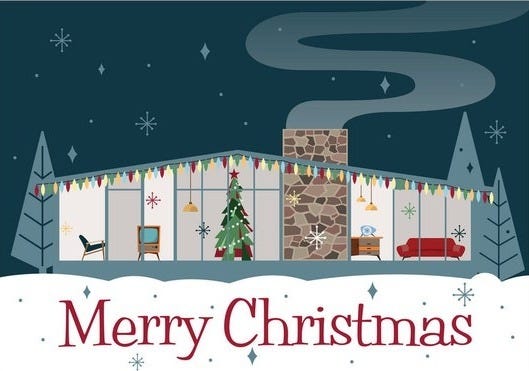Welcome to the latest edition of the Top 5 articles we’ve read this week. Each week, we read dozens of articles in the hope we find essays and reporting that speak to big ideas, trends, future looks, and incredible human stories. We hope you enjoy these articles, and do always let us know if you have a suggestion or a recommendation!
If this is a newsletter you look forward to each week, would you consider subscribing?
If you’re looking for a gift for a loved one, pick up a copy of The Spirit of Our Politics from your favorite local bookseller!
The Top 5 articles for your week:
“The Longevity Hot Spots That Weren’t” (New Republic)
Because Shayla Love examines the research and the claims behind the world’s “blue zones,” i.e. localities where people live to 100+ years old and now the US-based efforts to recreate blue zones in areas around the country.
The Blue Zones Project markets itself as a public health program, but it doesn’t measure its outcomes as rigorously as comparable initiatives run by academic institutions, so it’s hard to tell how effective it is. It’s also expensive. Largely for cost-related reasons, many of the participating towns and cities gave up their certifications as Blue Zones communities. And as the company grapples with how to help people live longer, healthier lives, the original blue zones are facing their own identity crisis. The data that shows concentrated populations of centenarians, some critics now allege, is flawed. Can you turn a U.S. city into a blue zone if the zones don’t exist in the first place?
“What if Charity Shouldn’t Be Optimized?” (NYT)
Because Emma Goldberg looks at the influence “effective altruism” has had on charitable donations.
Our debates over altruism come amid a real crisis for small, local charities. A report this year, from nearly 200 philanthropic leaders, noted that as 20 million households dropped out of giving, from 2010 to 2016, the organizations that have suffered most are community-based groups whose existence depends on small-dollar donors rather than on mega-philanthropists, and those that “provide the backbone of civic life.” There is nothing wrong, of course, with wanting to do the most good possible. But it’s also worth asking if some charity should be reserved for causes outside optimization — extending the deepest sources of meaning in our own lives toward others and strengthening the communities we are part of.
“Looking at Art Will Never Be the Same Again” (The Nation)
Because Francesca Billington interviews art historian and author Claire Bishop about the new ways people interact with art — especially broader cultural shifts around where we place our attention.
“Does Teaching Literature and Writing Have a Future?” (Plough Quarterly)
Because Phil Christman argues that “love is a form of knowledge” and that literature is the “queen of the sciences” and that “one text can hold seemingly (though not actually) everything.”
“In the Wake of Water” (Places Journal)
Because Will Steinfeld chronicles the increasing flood risk of a small island off of Rhode Island and how FEMA’s projections are unreliable for high-risk flood zones.





2 & 4 are so related and important. At the end of the day, we need to weigh what kind of a universe — internal & external — do we hope for, for our neighbors, our children, and ourselves, and the allocations we make in that pursuit. As a professional investor and basically exclusive novel-reader, I’ve been thinking about how I make sense of our household philanthropy, the investments I manage, this non-militant but consistent reading decision, and challenging myself to “make it make sense.” These articles are really additive - thank you!